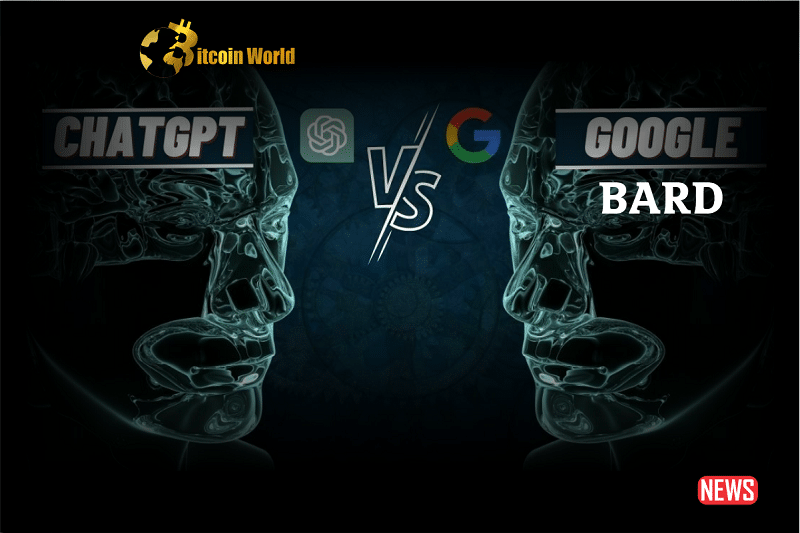The AI chatbot arena is buzzing! It feels like just yesterday we were marveling at the capabilities of OpenAI’s ChatGPT, and now, Google’s Bard has stepped into the ring, ready for a showdown. Remember Bard’s initial debut and that little hiccup about the James Webb telescope? Well, Google has been hard at work, and the latest iteration, powered by PaLM 2, is a game-changer. Let’s dive into this exciting rivalry and see what each chatbot brings to the table.
Bard’s Evolution: From Stumbles to Strides
Google didn’t just tweak Bard; they gave it a significant overhaul. Training it on the advanced PaLM 2 model has resulted in a chatbot that not only performs better than its predecessor but does so with remarkable efficiency, using less computing power. Think of it as a supercharged engine in a more streamlined vehicle. And the introduction of models like Otter, Bison, and Unicorn hints at the depth of Google’s AI arsenal.
Coding Prowess: Is Bard the New Code Whiz?
If you’re a coder, this is where things get really interesting. Bard boasts support for over 20 programming languages, making it a powerful tool for developers. Need help generating code? Stuck on a bug? Want a complex piece of code explained in simple terms? Bard has you covered. Let’s look at a quick example that highlights Bard’s speed:
Imagine asking both Bard and ChatGPT to create a simple HTML file with a button that displays an emoji each time it’s clicked. Here’s how the showdown played out:
- ChatGPT: Took approximately 30 seconds to generate the code.
- Bard: Delivered the code almost instantaneously!
That’s a significant difference in speed, showcasing Bard’s efficiency in code generation.
Staying Connected: How Well Do These Chatbots Navigate the Web?
In today’s information-rich world, internet connectivity is crucial for an AI chatbot. How do Bard and ChatGPT fare in this area?
Consider this: When asked about the differences between GPT-4 (powering Bing) and PaLM 2, Bard didn’t just provide a translation; it offered valuable context, enhancing understanding. While Bing, also leveraging GPT-4, provided sources to back up its information, Bard’s contextual understanding is a notable strength.
The Accessibility Advantage: Is Free the Key to Victory?
OpenAI’s ChatGPT has undoubtedly captured the public’s imagination and become a tech household name. However, Bard’s free accessibility could be a major advantage. Think about it – more users can experiment, provide feedback, and integrate Bard into their workflows without a paywall. This wider adoption could fuel its rapid development and refinement.
What’s Next? The Future of AI Chatbots
The AI chatbot landscape is constantly evolving. OpenAI has teased updates for ChatGPT, including multimodal capabilities and plugin compatibility, promising a richer and more versatile experience. Not to be outdone, Google is pursuing similar enhancements for Bard. This ongoing innovation means we can expect even more powerful and integrated AI assistants in the near future.
The Big Question: Who Will Reign Supreme?
So, in this exciting race between AI giants, who will ultimately emerge as the leader? Let’s break down the strengths of each contender:
Bard’s Strengths:
- Superior Coding Capabilities: Excellent for code generation, explanation, and debugging.
- Speed: Demonstrated faster response times in coding tasks.
- Internet Connectivity: Provides contextual understanding beyond simple translation.
- Free Accessibility: Potentially wider adoption and faster feedback loops.
ChatGPT’s Strengths:
- Early Mover Advantage: Established brand recognition and a large user base.
- Household Name Recognition: Familiarity and trust among users.
- Upcoming Multimodal and Plugin Support: Promising future versatility.
It’s clear that both Bard and ChatGPT bring unique strengths to the table. The competition is fierce, and ultimately, the “winner” might depend on individual user needs and preferences. A programmer might lean towards Bard’s coding prowess, while someone seeking general knowledge might appreciate ChatGPT’s established reputation.
The Takeaway: An Exciting Era of AI Innovation
One thing is certain: we are living in a transformative era for AI. The rivalry between Google, Microsoft (with its investment in OpenAI), and Meta is pushing the boundaries of what’s possible with AI chatbots. Whether you’re a developer, a writer, a student, or simply curious about the future of technology, the advancements in AI chatbots like Bard and ChatGPT offer incredible potential. Keep an eye on this space – the evolution of these powerful tools will undoubtedly shape how we interact with technology in the years to come.
Disclaimer: The information provided is not trading advice, Bitcoinworld.co.in holds no liability for any investments made based on the information provided on this page. We strongly recommend independent research and/or consultation with a qualified professional before making any investment decisions.


